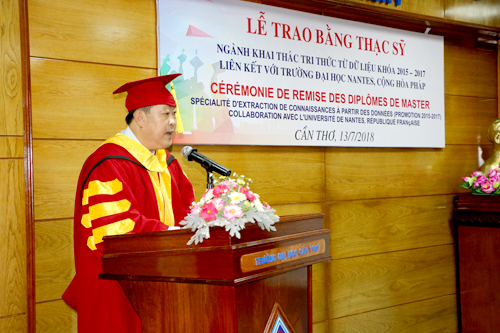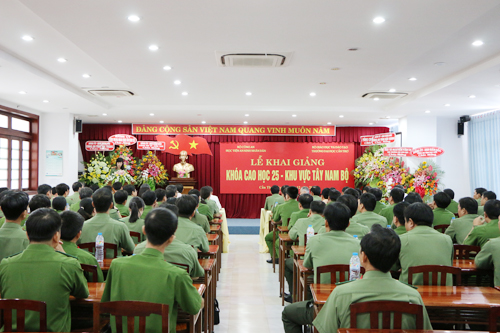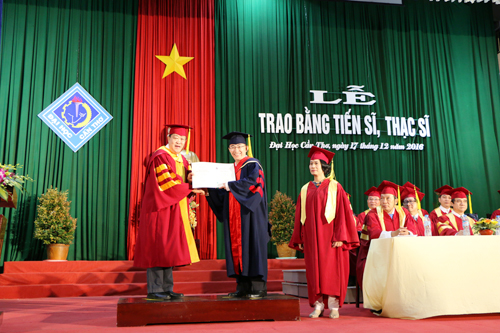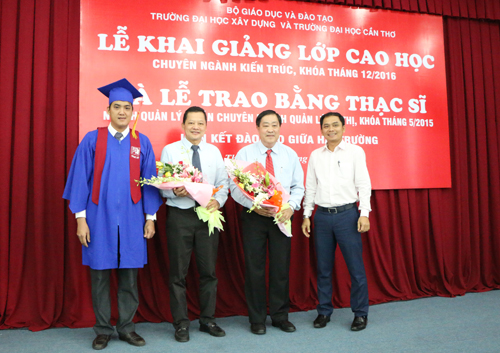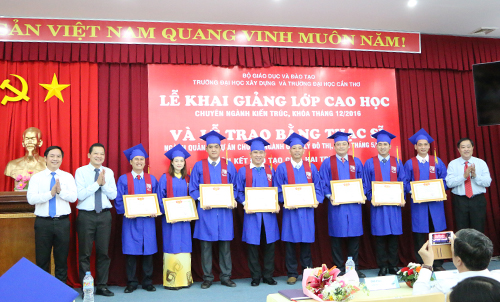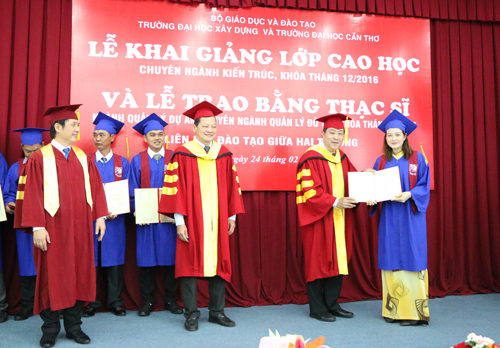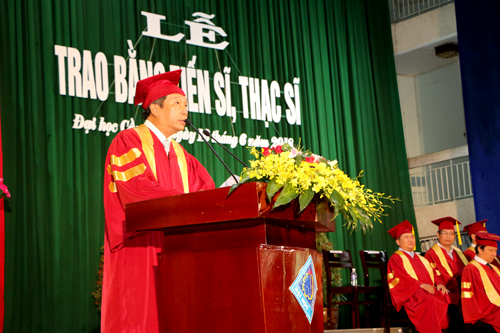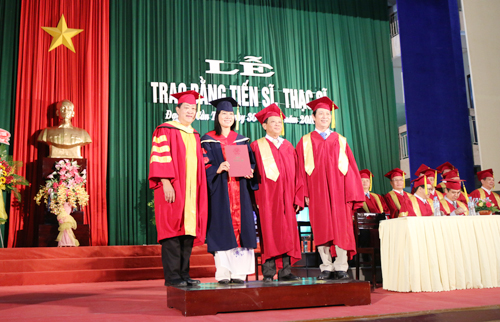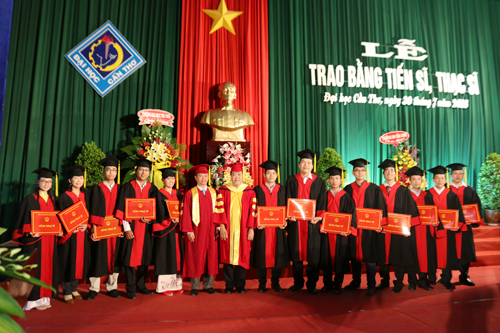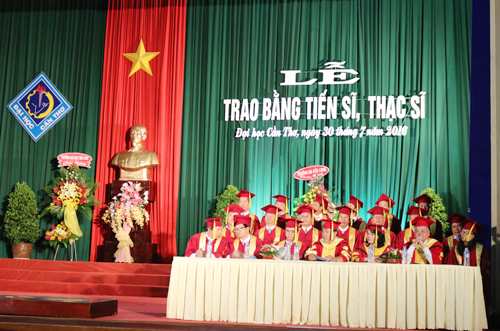
Tên đề tài: “Nghiên cứu sự hiện diện và kháng kháng sinh của vi khuẩn Staphylococcus spp. trên chó tại thành phố Hồ Chí Minh”
Tác giả: Nguyễn Thị Lan Anh, Khóa: 2021
Ngành: Bệnh lý học và chữa bệnh vật nuôi; Mã số: 9640102. Nhóm ngành: Thú y
Người hướng dẫn: PGS.TS. Nguyễn Thanh Lãm - Trường Đại học Cần Thơ
- Tóm tắt nội dung luận án
Staphylococcus spp. thường cư trú trong khoang mũi, hầu họng, da và niêm mạc chó. Các chủng Staphyloccocus đã được báo cáo là nguồn gây bệnh rất phổ biến trên chó khi cơ thể suy giảm miễn dịch, rối loạn nội tiết, tổn thương da và niêm mạc. Trong đó, loài S. pseudintermedius được báo cáo là loài phổ biến nhất. Các yếu tố độc lực của Staphylococcus spp. rất đa dạng, cho phép vi khuẩn này có khả năng né tránh hệ miễn dịch và góp phần gia tăng mức độ xâm nhiễm mô vật chủ. Ngoài ra, tình trạng đa đề kháng với kháng sinh của các chủng Staphylococcus ngày càng tăng gây khó khăn trong điều trị. Tại Việt Nam cũng như TP. HCM, việc nghiên cứu mang tính hệ thống về vi khuẩn này còn hạn chế. Từ thực tiễn đó, nghiên cứu này được thực hiện nhằm mục tiêu (1) Xác định sự hiện diện, định danh loài và một số yếu tố nguy cơ nhiễm Staphylococcus spp. trên chó tại TP. HCM; (2) Xác định tính đề kháng đối với kháng sinh và sự hiện diện của một số gene mã hóa đề kháng kháng sinh của Staphylococcus spp. trên chó phân lập được; (3) Xác định sự hiện diện của một số gene mã hóa yếu tố độc lực của Staphylococcus spp. trên chó phân lập được; (4) Xác định đặc điểm di truyền của một số chủng Staphylococcus đa kháng phân lập được dựa trên dữ liệu trình tự toàn bộ hệ gene.
Nghiên cứu được thực hiện với bốn nội dung (1) Khảo sát sự hiện diện của Staphylococcus spp. trên 410 chó bệnh đường hô hấp, viêm da và chó khỏe. Mẫu dịch mũi được thu thập từ 112 chó bệnh và 72 chó khỏe, mẫu da gồm 154 chó bệnh và 72 chó khỏe ở 10 phòng khám thú y tại TP. HCM. Định danh loài được xác định bằng phương pháp PCR. Xác định một số yếu tố nguy cơ tình trạng sức khỏe, giống, giới tính, tuổi, hình thức nuôi và địa điểm liên quan nhiễm Staphylococcus spp. (2) Khảo sát sự đề kháng kháng sinh của 309 chủng Staphylococcus bằng phương pháp khuếch tán trên thạch với 19 loại kháng sinh và MIC với vancomycin. Xác định sự hiện diện của 7 gene mecA, aacA-aphD, ermA, tetK, msrA, dfrA và gyrA mã hóa yếu tố đề kháng kháng sinh của 309 chủng Staphylococcus bằng phương pháp PCR. (3) Khảo sát sự hiện diện của 6 gene hla, hlb, lukS, siet, lukF và clfA mã hóa yếu tố độc lực của 309 chủng Staphylococcus bằng phương pháp PCR. (4) Xây dựng bản đồ toàn bộ hệ gene, phân tích gene đề kháng, gene độc lực và xác định đặc điểm di truyền (ST, MLST, cgMLST) của 1 chủng S. aureus phân lập từ da và 2 chủng S. pseudintermedius (1 chủng phân lập từ da và 1 chủng phân lập từ hô hấp) đa kháng.
Kết quả nghiên cứu cho thấy tỷ lệ phát hiện Staphylococcus spp. trên chó tại TP. HCM là 71,22% với tỷ lệ ở chó bệnh (78,95%) cao hơn chó khỏe (56,94%) và trên mẫu da (80,09%) cao hơn mẫu dịch mũi (60,33%). Kết quả định danh 309 chủng Staphylococcus đã xác định được 4 loài Staphylococcus là S. aureus, S. pseudintermedius, S. epidermidis và S. schleiferi. Trong đó, loài S. pseudintermedius chiếm tỷ lệ cao nhất (49,84%). Sự hiện diện Staphylococcus spp. trên chó không phụ thuộc vào giống, giới tính, địa điểm nhưng phụ thuộc vào tình trạng sức khỏe, nhóm tuổi và hình thức nuôi.
Kết quả khảo sát tính đề kháng đối với kháng sinh cho thấy Staphylococcus spp. đề kháng với amoxicillin (80,26%), penicillin (78,96%), ampicillin (78,32%), tetracycline (62,14%), erythromycin (53,07%) và azithromycin (50,81%). Staphylococcus spp. còn nhạy cảm với linezolid, vancomycin, amikacin, cephalexin, amoxicillin/clavulanic acid, cefoxitin và levofloxacin. Tỷ lệ Staphylococcus spp. đa kháng với kháng sinh là 60,52%.
Kết quả khảo sát gene mã hóa đề kháng kháng sinh đã xác định được 7 gene mã hóa đề kháng kháng sinh, trong đó gene aacA–aphD (64,72%) và tetK (51,78%) là phổ biến nhất, tiếp theo là gyrA (28,16%), mecA (26,54%), msrA (25,89%), dfrA (8,09%) và ermA (1,94%). 309 chủng Staphylococcus tạo ra 215 kiểu hình đề kháng kháng sinh và 51 kiểu các gene đề kháng. Trong các gene đề kháng phát hiện, gene aacA–aphD phân lập từ chó bệnh cao hơn trên chó khỏe, trên dịch mũi thấp hơn trên da nhưng các gene msrA, gyrA và dfrA phân lập từ chó khỏe cao hơn trên chó bệnh. Ngoài ra, gene dfrA hiện diện trên chủng Staphylococcus spp. phân lập từ mẫu dịch mũi cao hơn chủng phân lập từ mẫu da. Chưa có sự thống nhất hoàn toàn giữa kiểu gene và kiểu hình đề kháng được phát hiện.
Kết quả khảo sát gene mã hóa yếu tố độc lực đã xác định được 6 gene mã hóa yếu tố độc lực, trong đó gene siet (68,93%) và lukF (62,78%) cao hơn gene hlb (5,50%), lukS (2,27%), hla (1,94%) và clfA (0,65%). Có 15 kiểu hiện diện các gene độc lực, trong đó 12 kiểu gene độc lực (chó bệnh) và 8 kiểu gene độc lực (chó khỏe). Sự phát hiện các gene độc lực của Staphylococcus spp. trên chó bệnh và chó khỏe, trên mẫu dịch mũi và da là tương đồng nhau.
Giải trình tự toàn bộ hệ gene của ba chủng đa kháng S. aureus SB2.2, S. pseudintermedius RB10.2 và S. pseudintermedius SB24 cho thấy số gene đề kháng kháng sinh lần lượt là 27, 23 và 27. Trong đó, cả 3 chủng đều chứa 11 gene aacA–aphD, gyrA, norA, sdrM, blaZ, mecA, dfrC, ermB, mgrA, sepA và EF-Tu. Số gene độc lực lần lượt là 70, 20 và 20. Trong đó, cả 3 chủng đều chứa 10 gene icaA, icaB, icaC, geh, lip, nuc, adsA, capA, capB và capC. Xây dựng cây phát sinh loài dựa trên trình tự toàn bộ hệ gene cho thấy các chủng phân lập được có quan hệ di truyền gần với chủng Staphylococcus ở người và chó.
- Những kết quả mới của luận án
- Nghiên cứu đầu tiên một cách đầy đủ và hệ thống về định danh loài, gene đề kháng, gene độc lực và đặc điểm di truyền của Staphylococcus spp. trên chó tại TP. HCM và Việt Nam.
- Xác định được đặc điểm di truyền của Staphylococcus spp. đa kháng phân lập được dựa trên dữ liệu trình tự toàn bộ hệ gene.
- Các ứng dụng/khả năng ứng dụng trong thực tiễn, các vấn đề cần tiếp tục nghiên cứu
- Kết quả nghiên cứu của luận án là cơ sở khoa học cho xác định sự hiện diện Staphylococcus spp. trên chó tại TP. HCM. Những thông tin khoa học này rất hữu ích trong việc lựa chọn những kháng sinh còn hiệu quả với Staphylococcus spp. trên chó để hỗ trợ cho điều trị. Đồng thời cảnh báo về khả năng phát sinh của các chủng vi khuẩn nguy hiểm trong môi trường chăn nuôi thú cưng đô thị.
- Kết quả của nghiên cứu này đã xác định gene aacA–aphD và tetK mã hóa đề kháng kháng sinh, gene siet và lukF mã hóa yếu tố độc lực là phổ biến, đây là cơ sở quan trọng để giải thích cơ chế đề kháng và gây bệnh của các chủng Staphylococcus.
- Giải trình tự toàn bộ hệ gene Staphylococcus spp. trên chó giúp xác định đặc điểm di truyền và mối liên hệ di truyền, đồng thời làm cơ sở khoa học cho những nghiên cứu sau.
- Thesis title: Study on the Presence and Antibiotic Resistance of Staphylococcus spp. on Dogs in Ho Chi Minh City
- Major: Animal Pathology and Disease Treatment Code: 9640102
- Full name of PhD student: Nguyen Thi Lan Anh Year: 2021
- Scientific supervisor: Assoc. Prof. Dr. Nguyen Thanh Lam
- Educational institution: Can Tho University
- Content of thesis summary
Staphylococcus spp. are commensal bacteria found in the nasal cavity, pharynx, skin, and mucous membranes of dogs. These bacteria are widely recognized as common pathogens in dogs, particularly when the animals are immunocompromised, suffer endocrine disorders, or experience injuries to the skin and mucosa. Among the various species, S. pseudintermedius has been reported as the most prevalent. The virulence factors of Staphylococcus spp. are diverse, allowing these bacteria to evade the immune system and contribute to increased host tissue invasion. Moreover, the emergence of multidrug-resistant Staphylococcus strains poses significant challenges to treatment. In Vietnam, particularly Ho Chi Minh City, systematic research on this bacterium has been limited. Therefore, this study aims to (1) Determine the presence, species identification, and risk factors for Staphylococcus spp. infection in dogs in Ho Chi Minh City; (2) Determine antibiotic resistance and the presence of resistance genes in Staphylococcus spp. isolated from dogs; (3) Identify the presence of virulence genes of Staphylococcus spp. in isolated dogs; and (4) Conduct whole-genome sequencing and genetic characterization of three multidrug-resistant Staphylococcus strains.
This study comprises four chapters: (1) Investigation of the presence of Staphylococcus spp. in 410 dogs with respiratory diseases, dermatitis, and healthy dogs. Samples were collected from nasal swabs (112 sick dogs, 72 healthy dogs) and skin samples (154 sick dogs, 72 healthy dogs) at 10 veterinary clinics in Ho Chi Minh City. Species identification was determined by PCR method. Health risk factors—including health status, breed, sex, age, farming practices, and locations—were assessed for their association with Staphylococcus spp. infection. (2) Antibiotic susceptibility of 309 Staphylococcus strains were tested using the agar diffusion method with 19 types of antibiotics and minimum inhibitory concentration (MIC) testing for vancomycin. The presence of 7 genes mecA, aacA-aphD, ermA, tetK, msrA, dfrA, and gyrA encoding antibiotic resistance factors of 309 Staphylococcus strains were determined by PCR. (3) Investigating the presence of 6 genes hla, hlb, lukS, siet, lukF, and clfA encoding virulence factors of 309 Staphylococcus strains using the PCR method. (4) Construction of genome maps, analysis of resistance and virulence genes, and genetic characterization (ST, MLST, cgMLST) of three multidrug-resistant strains: one S. aureus strain isolated from skin and two S. pseudintermedius strains (one strain from skin and one strain from the respiratory tract).
The results showed that the isolation rate of Staphylococcus spp. in dogs in Ho Chi Minh City was 71.22%, with a higher detection rate in diseased dogs (78.95%) compared to healthy dogs (56.94%), and in skin samples (80.09%) higher than in nasal samples (60.33%). Among 309 identified Staphylococcus strains, four species were detected: S. aureus, S. pseudintermedius, S. epidermidis, and S. schleiferi. Among these, the species S. pseudintermedius being the most prevalent (49.84%). Detection rates were significantly associated with health status, age, and raising practices, but not with breed, gender, or location.
The results of antibiotic susceptibility testing showed that Staphylococcus spp. strains were resistant to amoxicillin (80.26%), penicillin (78.96%), ampicillin (78.32%), tetracycline (62.14%), erythromycin (53.07%), and azithromycin (50.81%). Staphylococcus spp. remains sensitive to linezolid, vancomycin, amikacin, cephalexin, amoxicillin/clavulanic acid, cefoxitin, and levofloxacin. The rate of multidrug–resistant Staphylococcus spp. was 60.52%.
The investigation of antibiotic resistance encoding genes were identified 7 genes, in which aacA–aphD (64.72%) and tetK (51.78%) gene being the most common, followed by gyrA (28.16%), mecA (26.54%), msrA (25.89%), dfrA (8.09%), and ermA (1.94%). 309 Staphylococcus spp. strains had created 215 distinct antibiotic resistance phenotypes and 51 patterns of presence of resistance genes. Among the recognized resistance genes, aacA–aphD gene isolated from sick dogs was higher than those from healthy dogs, in nasal samples it was lower than in skin samples, but msrA, gyrA and dfrA genes isolated from healthy dogs were higher than in sick dogs. Furthermore, dfrA gene was present in strains of Staphylococcus spp. isolated from nasal samples more than from skin samples. Correlation between the presence of antibiotic resistance genes and antibiotic resistance phenotypes was unclear.
The results of the investigation of genes encoding virulence factors were identified 6 genes, with siet (68.93%) and lukF (62.78%) higher than hlb (5.50%), lukS (2.27%), hla (1.94%), and clfA (0.65%) genes. A total of 15 virulence gene patterns were observed, including 12 virulence genotypes in diseased dogs and 8 virulence genotypes in healthy dogs. The presence of virulence genes of Staphylococcus spp. in sick and healthy dogs, in nasal and skin samples, was similar.
Whole-genome sequencing of three multidrug-resistant strains of S. aureus SB2.2, S. pseudintermedius RB10.2, and S. pseudintermedius SB24 showed that the number of antibiotic resistance genes detected followed as 27, 23, and 27 genes, in which all strains contain eleven aacA–aphD, gyrA, norA, sdrM, blaZ, mecA, dfrC, ermB, mgrA, sepA and EF–Tu genes. The number of virulence genes detected followed as 70, 20 and 20 genes, in which all strains were 10 genes (icaA, icaB, icaC, geh, lip, nuc, adsA, capA, capB and capC). Phylogenetic tree analysis based on genome sequences demonstrated showed that the isolated strains were genetically closely related to human and dog Staphylococcus strains.
- The novelty from the thesis
- This is the first comprehensive and systematic study on species identification, resistance genes, virulence genes, and genetic characteristics of Staphylococcus spp. in dogs in Ho Chi Minh City and Vietnam.
- The genetic characterization of multidrug-resistant strains based on whole-genome sequencing is a key contribution.
- Application prospect and recommendations for further study
- The results of this dissertation provide a scientific basis for identifying the presence of Staphylococcus spp. on dogs in Ho Chi Minh City. This scientific information is very useful in selecting effective antibiotics against Staphylococcus spp. in dogs to support treatment. At the same time, this warns of the potential emergence of hazardous bacterial strains in urban pet-rearing environments.
- The results of this study have identified the genes aacA–aphD and tetK encoding antibiotic resistance, as well as the genes siet and lukF encoding virulence factors, as common, which is an important basis for explaining the resistance mechanisms and pathogenicity of Staphylococcus strains.
- Whole-genome sequencing of Staphylococcus spp. in dogs helps identify genetic characteristics and genetic relationships, while providing a scientific basis for further studies.
- Xem chi tiết nội dung luận án
- Xem thông tin đăng tải tại Website Bộ giáo dục và Đào tạo. (Nhập tên NCS vào ô tìm kiếm)





